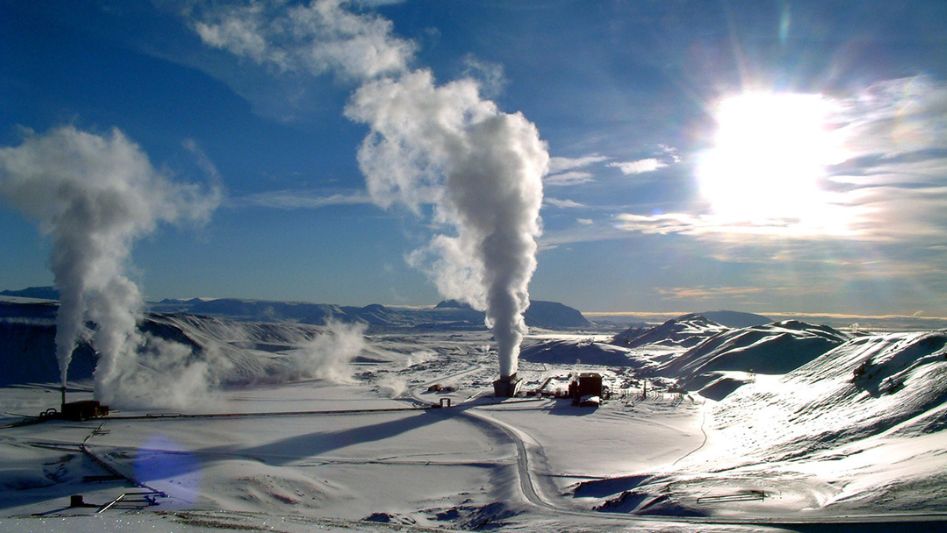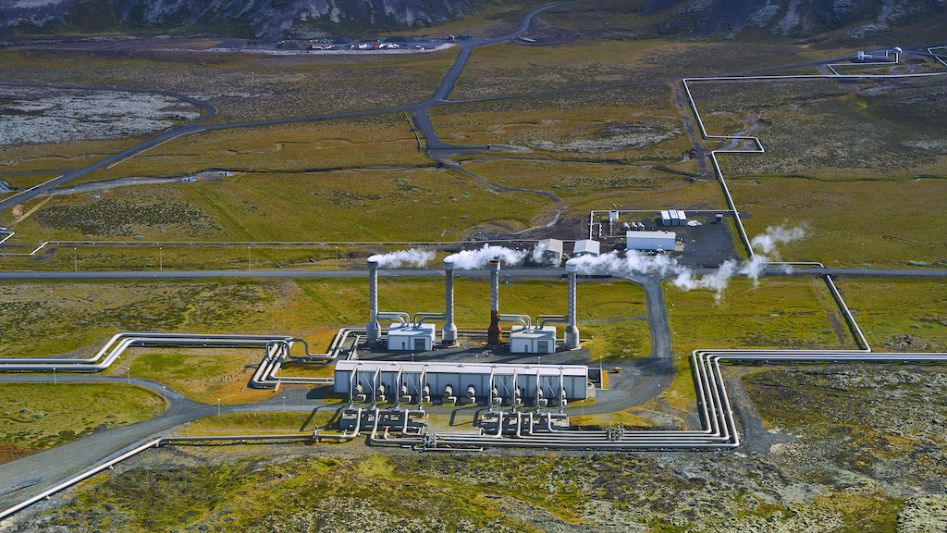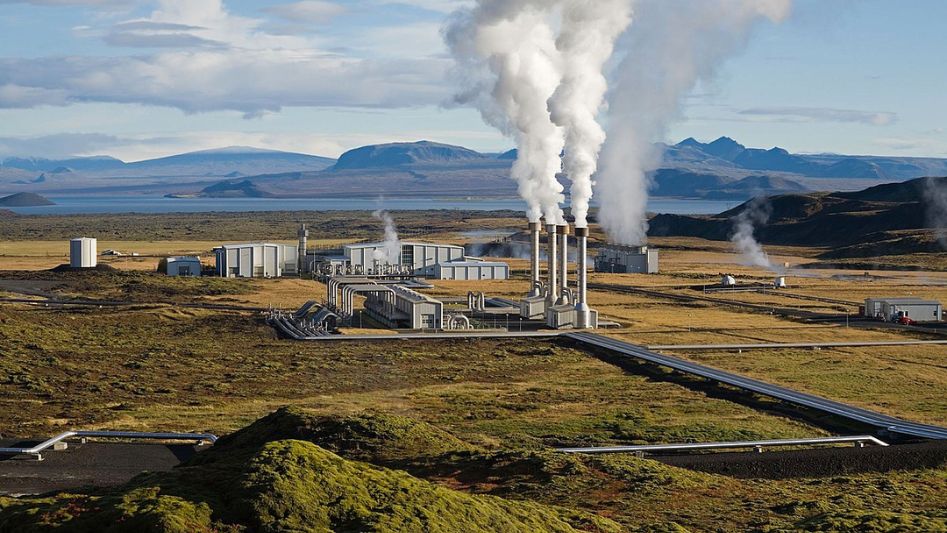In the quest for clean and sustainable sources of energy, geothermal energy often takes a backseat to more popular options like solar and wind power. However, beneath the Earth’s surface lies a hidden gem that has the potential to provide a significant portion of our energy needs while producing minimal greenhouse gas emissions. Geothermal energy harnesses the heat generated by the Earth’s core and has been used for centuries in various forms. In this article, we will explore the basics of geothermal energy, its applications, and its promising role in our transition to a greener future.
Table of Contents

Understanding Geothermal Energy
The Earth’s Heat Source
Geothermal energy relies on the heat stored within the Earth’s core. At the Earth’s center, temperatures can reach up to 9,000 degrees Fahrenheit (5,000 degrees Celsius) due to the heat generated by radioactive decay and residual heat from the planet’s formation. This immense heat flows outward through the Earth’s layers, gradually cooling as it moves towards the surface.
The Geothermal Gradient
As we move closer to the Earth’s surface, the temperature gradient, known as the geothermal gradient, becomes more manageable for our energy needs. On average, the Earth’s temperature increases by about 25 to 30 degrees Fahrenheit (15 degrees Celsius) per kilometer of depth. This natural temperature gradient makes it possible to access heat from the Earth’s interior relatively easily.
Harnessing Geothermal Energy
Geothermal Power Plants
Geothermal power plants are the primary means of harnessing geothermal energy for electricity generation. These plants are typically located in regions with high levels of geothermal activity, such as volcanic areas or tectonic plate boundaries. There are three main types of geothermal power plants:
- Dry Steam Power Plants: These plants use high-pressure steam extracted directly from underground reservoirs to drive turbines and generate electricity.
- Flash Steam Power Plants: Flash steam plants utilize high-temperature water from underground reservoirs. As the hot water is released into lower-pressure tanks, it instantly flashes into steam, which is then used to drive turbines.
- Binary Cycle Power Plants: In binary cycle plants, lower-temperature geothermal fluids are used to heat a separate working fluid, such as isobutane or pentane, which vaporizes and drives a turbine.

Direct Use Applications
Geothermal energy is not limited to electricity generation. It can also be used directly for various applications, including:
- Space Heating: Geothermal heat pumps can efficiently heat buildings by transferring heat from the Earth to the interior.
- Hot Water Supply: Geothermal water can be used for domestic and industrial hot water needs.
- Greenhouse Heating: Geothermal heat is used to maintain optimal temperatures in greenhouses, allowing year-round crop production.
Environmental Benefits of Geothermal Energy
Geothermal energy offers several environmental advantages:
- Low Emissions: Geothermal power plants produce minimal greenhouse gas emissions compared to fossil fuels.
- Reliable and Consistent: Unlike intermittent sources like solar and wind, geothermal energy is available 24/7, providing a stable source of electricity.
- Minimal Land Footprint: Geothermal power plants require relatively small land areas compared to solar and wind farms, minimizing habitat disruption.
- Longevity: Geothermal reservoirs can provide energy for decades to centuries without significant depletion.
Challenges and Future Outlook
While geothermal energy holds great promise, there are challenges to overcome:
- Location Dependency: Geothermal resources are concentrated in specific regions, limiting widespread adoption.
- Initial Investment: Building geothermal power plants and drilling wells can be costly.
- Resource Sustainability: Over-extraction can deplete geothermal reservoirs, so careful resource management is essential.
Despite these challenges, advancements in technology and increased recognition of the importance of sustainable energy sources have spurred interest in geothermal energy. Enhanced geothermal systems (EGS) aim to expand the reach of geothermal energy by creating artificial reservoirs, reducing location dependency. Additionally, research into deeper geothermal resources may open up new opportunities for tapping into Earth’s heat.

Conclusion
Geothermal energy is a hidden source of sustainable heat with vast potential. Its minimal environmental impact, reliability, and versatility make it a valuable player in the transition to a greener energy landscape. As we continue to develop and expand geothermal technologies, we can unlock more of Earth’s natural heat to power our homes, industries, and a sustainable future.
FAQs
How is geothermal energy generated?
Geothermal energy is generated by tapping into the natural heat stored within the Earth’s crust and converting it into useful forms of energy.
What are the environmental benefits of geothermal energy?
Geothermal energy produces minimal greenhouse gas emissions, offers a reliable energy source, and has a small land footprint, making it an environmentally friendly option.
Where are geothermal resources typically found?
Geothermal resources are commonly found in regions with volcanic activity or tectonic plate boundaries, but advancements in technology are expanding their reach.
What are the challenges of geothermal energy?
Challenges include location dependency, initial investment costs, and the need for sustainable resource management to prevent reservoir depletion.
You May Also Like
- GEOTHERMAL ENERGY: EARTH’S HIDDEN HEAT SOURCE
- HOW GEOTHERMAL ENERGY CAN REVOLUTIONIZE SUSTAINABLE POWER GENERATION
- SECRET FUSION TECH LEADS TO A GEOTHERMAL ENERGY BREAKTHROUGH
- THE ECONOMICS OF GREEN ENERGY: COST AND BENEFIT ANALYSIS
- THE ROLE OF TECHNOLOGY IN ADVANCING GREEN ENERGY
